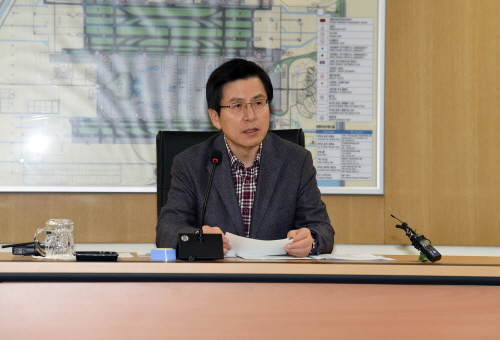PM urges officials to tighten airport security
- 관리자
- 2016.01.30
- Hit 3722
Prime Minister Hwang Kyo-ahn called on officials Saturday to strengthen security at South Korea's main airport, describing a recent series of security breaches as a crisis.
"Everything will be lost if security is compromised," Hwang said in a rare visit to Incheon International Airport, west of Seoul.
He told airport officials to boost security, saying illegal entries by passengers and other accidents could threaten to undermine the standing and competitiveness of the airport.
The visit came hours after police said they found a warning message written in Arabic inside a box discovered at Incheon International Airport.
The message, written on a sheet of paper half the size of A4, read: "This is the last warning to you. God will punish."
It was not a handwritten but a printed sentence with some grammatical errors, according to the police, who suspected that it could have been translated by a computer program or by a person whose Arabic skill is not that good.
The discovery was announced a day after the police found a box suspected to contain explosive devices in a men's bathroom in the airport. No explosives or detonators were found, just two butane canisters and one bottled water taped to it, according to the police.
Seoul's main gateway was named the world's best airport for the 10th consecutive year in 2015 by Global Traveler, a U.S. magazine for business travelers.
Still, the airport has been under public fire for security breaches.
On Friday, a Vietnamese man illegally entered South Korea at the airport.
Police have yet to find the 25-year-old transfer passenger, who forced his way out of a gate of an unmanned automatic immigration checkpoint in the airport
Last week, a Chinese couple illegally sneaked into South Korea without being noticed by immigration officials and checked by the airport's security control system.
They were apprehended earlier this week by the immigration authorities in Cheonan, about 90 kilometers south of Seoul, before being taken into custody.





